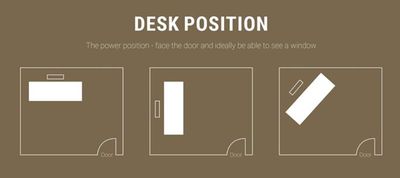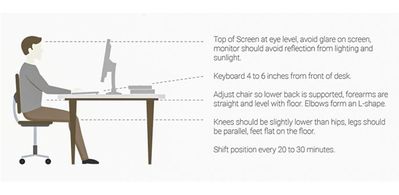Improve your work flow: Home office tips to reduce stress

With the advent of the internet and decentralization, more and more of us are working at home: 1.5 million full time, 4.2 million part time to provide raw numbers.
Spending up to 50 hours per week in a room that is not fit for purpose is hardly conducive to producing top-class work and so it is necessary to get the interior design right.
It may sound obvious but buying the right desk is crucial, especially if you’ll be staring at a computer screen for hours on end, and it is important to get one that will cater for your needs.
Wooden twin-pedestals are widely regarded as the best for both style and the storage space they offer, but you can opt for a more sleek and lightweight style if that works better for you.
Desk Position the key to productivity
Multiple studies have found that where you position your desk in your office space has a measurable impact on your mindset and performance. Assuming the ‘power position’ of facing the door and ideally at least one window is the key to a productive and positive mindset.

Additional research has shown that working in a space with a natural light source improves sleep. Office workers with a window average 46 minutes more sleep per night. Over one working month, you will feel the difference in the performance.
Your seating position also matters to ensure high productivity. If you feel uncomfortable or in pain, this will negatively affect your concentration leading to mistakes, oversights and missed ‘lightbulb moment’ ideas.

Create a de-stress zone
While the majority of time in a home office will be spent at your desk it is also important to create designated ‘de-stress ‘zones where you can retreat to for a short break when you feel you are losing concentration. A small sofa, armchair or even beanbag is all you need.
And don’t feel like your ‘slacking’ when taking a break. In a recently published article in the New York Times, productivity expert Dr. Levine recommends working in intense 15 minute slots, followed by short breaks in an ongoing cycle throughout the day.
Remember to work smarter, not harder. Long hours don’t always translate to better work.
Colour scheme
The colour scheme of a home office is very personal but research suggests that different colours suit different people's personalities.
Red is said to stimulate appetite and heart rate, while blue has a calming effect on the nervous system that can increase focus. Yellows have been found to also induce calmness and creativity – the same goes for green.
Should you find yourself regularly stressed while working, try re-painting your home office one of the more calming colours to see how you go.



